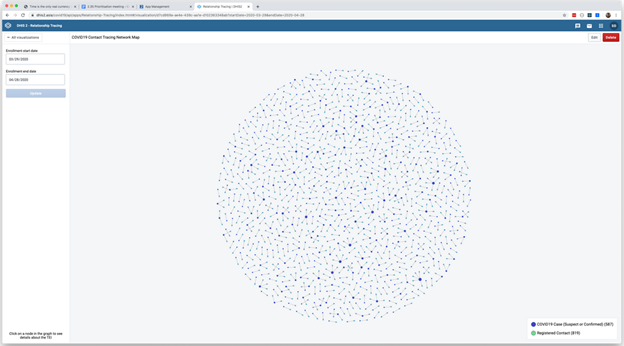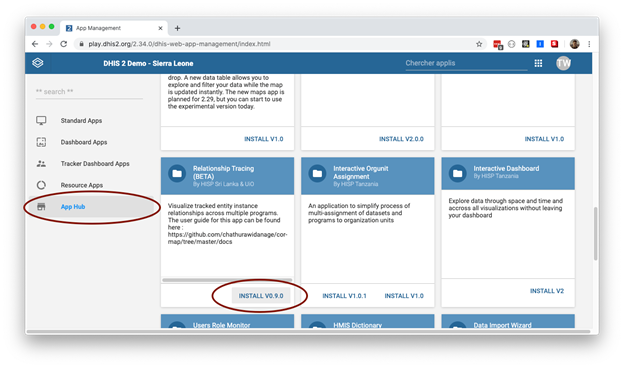Background
The COVID-19 pandemic has challenged health systems around the globe in the first half of 2020 with its rapid spread across countries, affecting the lives and health of millions of people worldwide. Health authorities require rapid public health measures to contain the disease and reduce its negative impact. Quality health information has become the key to this entire process.
Sri Lanka was one of the first countries to adopt DHIS2 for COVID-19 surveillance in the world. In the process of customizing DHIS2 for case-based surveillance in COVID-19, contact tracing was highlighted as a main requirement. The DHIS2 data model has significant capacity to cater to case-based surveillance and contact tracing with the DHIS2 tracker functionality. However, the Ministry of Health wanted to have a visualization for public health interventions as well as epidemiological investigations which could demonstrate the possible spread of disease across a cohort of cases and their contacts. Since the native DHIS2 did not have functionality to output this visualization, HISP Sri Lanka ventured into developing a DHIS2 custom web app which works within the DHIS2 instance.
The app was initially developed by @Chathura of HISP Sri Lanka and was further modified to support generic the use case of relationship mapping in case-based surveillance by @Austin of UiO with the inputs from DHIS2 experts.

Prerequisites
The relationship tracing on this app depends on the relationship model in DHIS2. Therefore, it is required to configure and add relationships in DHIS2 prior to obtaining outputs using this app.
- Existing tracker program/s with tracked entity instances registered in the system
- Configuration of relationships in DHIS2
- Relationships linking tracked entity instances.
Functionality
The user guide for the app is available at: cor-map/docs at master · chathurawidanage/cor-map · GitHub
The app has following features.
- generic design which supports selecting metadata from a graphical user interface
- designing and saving multiple visualizations for different use cases
- displaying the entities involved in a relationship (from/to) along with the direction of the relationship (e.g.: arrow highlighting the direction from case to contact)
- support for bidirectional relationship visualizations
- support for colour-coding of nodes (tracked entity instances) by program in the visualization
- support for displaying labels from TEI attributes next to the nodes
- support for displaying relationships across multiple programs
- support for hiding nodes which do not have any relationships
- displaying the count of each type of node involved in the relationships
- support for zooming in and out to focus on a node
- support for filtering based on program enrollment dates
- support for displaying an attribute summary for a selected tracked entity instance in the app itself
- displaying a link to open the tracked entity instance in the DHIS2 tracker capture app
To do
Several features and known issues are on the roadmap but have not yet been fixed implemented. The full list is available here. The following are some of the important improvements we foresee:
Add support for org unit filtering
Support multi-program and program stage legend items
Add support for “search-and-trace” visualization types for contact tracing use-cases
Add support for sharing saved visualizations
Installation
For DHIS2 version 2.34
Navigate to the App Management app, click on the App Hub tab, search for Relationship Tracing and click Install V0.9.0 .

For DHIS2 version 2.32-2.33
Find the Relationship Tracing application on the DHIS2 App Hub here, download the application zip file, then upload it in the App Management app of your DHIS2 instance.
Feedback & Collaboration
This is a community effort and we welcome feedback, suggestions, and collaboration to improve the app! Any feedback or suggestions can be submitted as new GitHub Issues here
The source code is available on GitHub at chathurawidanage/cor-map, and developers who want to contribute are welcome to contribute by submitting a pull request.
Development Credits
@austin Austin McGee - Core Developer of UiO
Chathura Widanage - Developer of HISP Sri Lanka